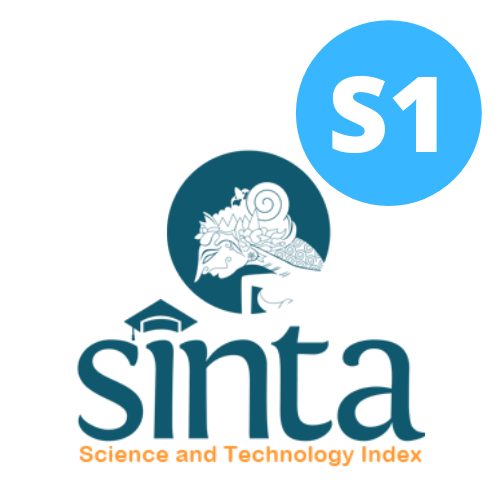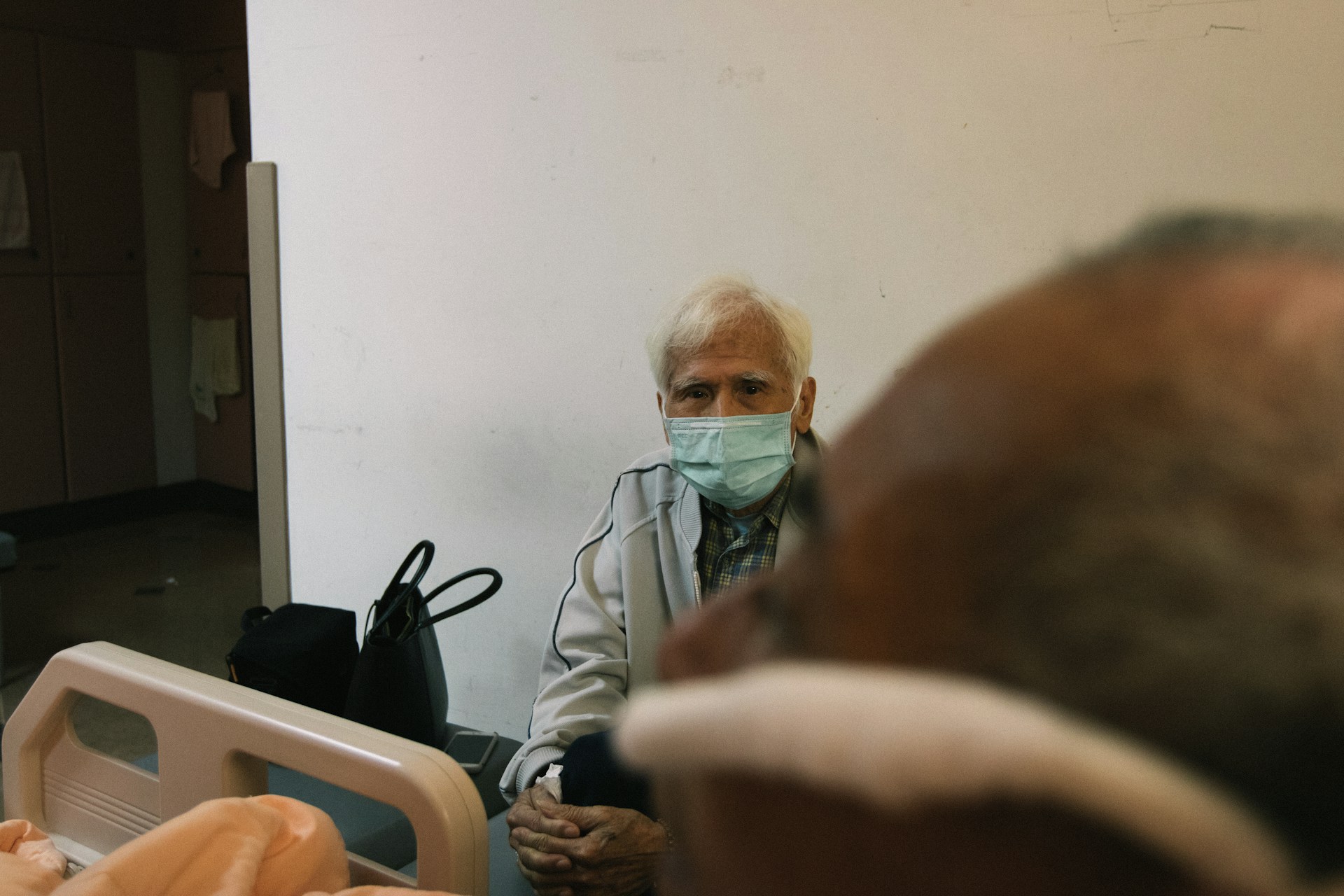The Relation of Infectious Diseases, Water Access, Hygiene Practice, and Sanitation with the Stunting: A Case-Control Study in Sambas Regency
Hubungan Penyakit Menular, Sumber Air Bersih, Praktik Kebersihan, dan Sanitasi dengan Kejadian Stunting: Studi Kasus Kontrol di Kabupaten Sambas

Downloads
Background: The main nutritional problem concerned by the Indonesian government is the stunting. This condition is affected by various aspects, mainly caused by infectious diseases, clean and unharmonious living behavior, the availability of drinking water, and environmental sanitation.
Objectives: The purpose of this study is to determine the relation of infectious diseases, water access, hygiene practices, and sanitation towards the stunting incidence factors in Sambas Regency.
Methods: This research used Ex Post Facto with a case-control design. The study population was residents of Sambas Regency with a total of 535,725 people, a total sample of 241 children aged 0-59 months comprising of 89 respondents as cases and the rest 159 respondents as controls, using inclusion and exclusion criteria both from the control group and from the case group. Data analysis used the chi-square test.
Results: The results showed a relation of infectious diseases (p-value=0.000), drinking water sources (p-value=0.000), clean and healthy living behavior (p-value=0.000), and environmental conditions (p-value=0.000) with the stunting incidences.
Conclusions: The study concludes that there is a significant relation of infectious disease variables, the drinking water sources, hygiene practices, and environmental conditions with the stunting. It requires control and completion of the stunting cases through environmental sanitation improvement, namely the provision of access to clean water, healthy and clean living behaviors, and good cooperation between the government and the community, in educating people through counseling and socialization of the stunting prevention and management.
Abdulahi, A., Shab-Bidar, S., Rezaei, S. & Djafarian, K. Nutritional Status of Under Five Children in Ethiopia: A Systematic Review and Meta-Analysis. Ethiop J Health Sci 27, 175–188 (2017).
Victora, C. G. et al. Maternal and Child Undernutrition 2 Maternal and Child Undernutrition: Consequences for Adult Health and Human Capital. www. thelancet. com 371, (2008).
Mulyaningsih, T. et al. Beyond personal factors: Multilevel Determinants of Childhood Stunting in Indonesia. PLoS One 16, (2021).
Ministry of Health of the Republic of Indonesia. Result of Indonesian Nutrient Status Survey in 2022. Retrieved from https://monalisa.bkkbn. go. id (2023).
Purba, I. G., Sunarsih, E., Trisnaini, I. & Sitorus, R. J. Environmental Sanitation and Incidence of Stunting in Children Aged 12-59 Months in Ogan Ilir Regency. Journal of Environmental Health 12, 189–199 (2020).
Adi, S., Krisnana, I., Rahmawati, P. D. & Maghfiroh, U. Environmental Factors that Affect the Incidence of Stunting in Under-five Children: A Literature Review. Pediomaternal Nursing Journal 9, 42–44 (2023).
Wolf, J. et al. Systematic review: Assessing the Impact of Drinking Water and Sanitation on Diarrhoeal Disease in Low and Middle- Income Settings: Systematic Review and Meta-regression. Tropical Medicine and International Health 19, 928–942 (2014).
World Health Organization. Soil-Transmitted Halminthiases : STH : Eliminating Soil-Transmitted Helminthiases as a Public Health Problem in Children : Progress Report 2001-2010 and Strategic Plan 2011-2020. (World Health Organization, 2012).
Richard, S. A. et al. Wasting is Associated with Stunting in Early Childhood. Journal of Nutrition 142, 1291–1296 (2012).
Colston, J. M. et al. A Methodologic Framework for Modeling and Assessing Biomarkers of Environmental Enteropathy as Predictors of Growth in Infants: An Example from a Peruvian Birth Cohort. doi:10. 3945/ajcn. 116.
Vonaesch, P. et al. Identifying the Etiology and Pathophysiology Underlying Stunting and Environmental Enteropathy: Study Protocol of the AFRIBIOTA Project. BMC Pediatr 18, (2018).
Ma, E. et al. Socio-demographic and Environmental Determinants of Under-stunting in Rwanda: Evidence from a Multisectoral Study. Front. Public Health 11:1107300 (2023) doi:10. 3389/fpubh. 2023. 1107300.
Murtaza, S. F., Gan, W. Y., Sulaiman, N., Shariff, Z. M. & Ismail, S. I. F. Sociodemographic, Nutritional, and Environmental Factors are Associated with Cognitive Performance among Orang Asli Children in Malaysia. PLoS One 14, (2019).
Sriyanah, N., Efendi, S., Ilyas, H. , Rusli, R. & Nofianti, N. Clean and Healthy Lifestyle Behavior (PHBS) in Families with Stunted Children at Karuwisi Public Health Center. Aisyah Journal: Journal of Health Sciences 8, (2023).
Basic Health Research. 2018 Report of Basic Health Research. (2019).
Ministry of Health of the Republic of Indonesia. Report of West Kalimantan Province in Basic Health Research in 2018 (2018).
Lazzeri, G. et al. Factors Associated with Unhealthy Behaviours and Health Outcomes: A Cross-sectional Study among Tuscan Adolescents (Italy). Int J Equity Health 13, (2014).
Ikhtiarti, W. , Rahfiludin, M. Z. & Nugraheni, S. A. Determinant Related to the Stunting Incidence in Toddlers at the Age of 1-3 Years in the Coastal Area of Brebes Regency 10, 51–56 (2020).
Batiro, B., Demissie, T., Halala, Y. & Anjulo, A. A. Determinants of Stunting among Children aged 6-59 Months at Kindo Didaye Woreda, Wolaita Zone, Southern Ethiopia: Unmatched Case Control Study. PLoS One 12, 1–15 (2017).
Beal, T., Tumilowicz, A., Sutrisna, A., Izwardy, D. & Neufeld, L. M. A Review of Child Stunting Determinants in Indonesia. Maternal and Child Nutrition vol. 14 Preprint at https://doi. org/10. 1111/mcn. 12617 (2018).
Saaka, M., Saapiire, F. N. & Dogoli, R. N. Independent and Joint Contribution of Inappropriate Complementary Feeding and Poor Water, Sanitation and Hygiene (WASH) Practices to Stunted Child Growth. J Nutr Sci 10, (2021).
Chattopadhyay, A. et al. WASH Practices and Its Association with Nutritional Status of Adolescent Girls in Poverty Pockets of Eastern India. BMC Women’s Health 19, (2019).
Mshida, H. A., Kassim, N., Mpolya, E. & Kimanya, M. Water, Sanitation, and Hygiene Practices Associated with Nutritional Status of Under-five Children in Semi-pastoral Communities Tanzania. American Journal of Tropical Medicine and Hygiene 98, 1242–1249 (2018).
Shinsugi, C. & Mizumoto, A. Associations of Nutritional Status with Full Immunization Coverage and Safe Hygiene Practices among Thai Children Aged 12–59 Months. Nutrients 14, (2022).
Singh, P. et al. An Assessment of Personal Hygiene Practices among Young Adults: A Cross-Sectional, Descriptive Study. Cureus (2023) doi:10. 7759/cureus. 44308.
Yani, D. I., Rahayuwati, L., Sari, C. W. M., Komariah, M. & Fauziah, S. R. Family Household Characteristics and Stunting: An Update Scoping Review. Nutrients vol. 15 Preprint at https://doi. org/10. 3390/nu15010233 (2023).
Rizal, M. F. & van Doorslaer, E. Explaining the Fall of Socioeconomic Inequality in Childhood Stunting in Indonesia. SSM Popul Health 9, (2019).
Copyright (c) 2024 Amerta Nutrition

This work is licensed under a Creative Commons Attribution-ShareAlike 4.0 International License.
AMERTA NUTR by Unair is licensed under a Creative Commons Attribution-ShareAlike 4.0 International License.
1. The journal allows the author to hold the copyright of the article without restrictions.
2. The journal allows the author(s) to retain publishing rights without restrictions
3. The legal formal aspect of journal publication accessibility refers to Creative Commons Attribution Share-Alike (CC BY-SA).
4. The Creative Commons Attribution Share-Alike (CC BY-SA) license allows re-distribution and re-use of a licensed work on the conditions that the creator is appropriately credited and that any derivative work is made available under "the same, similar or a compatible license”. Other than the conditions mentioned above, the editorial board is not responsible for copyright violation.












































